Gisaeng were technically enslaved sex workers, but in misogynistic Joseon Korea, they were an elite group of women that transcended strict Confucian lines.
Gisaeng: The Flowers of Joseon ?
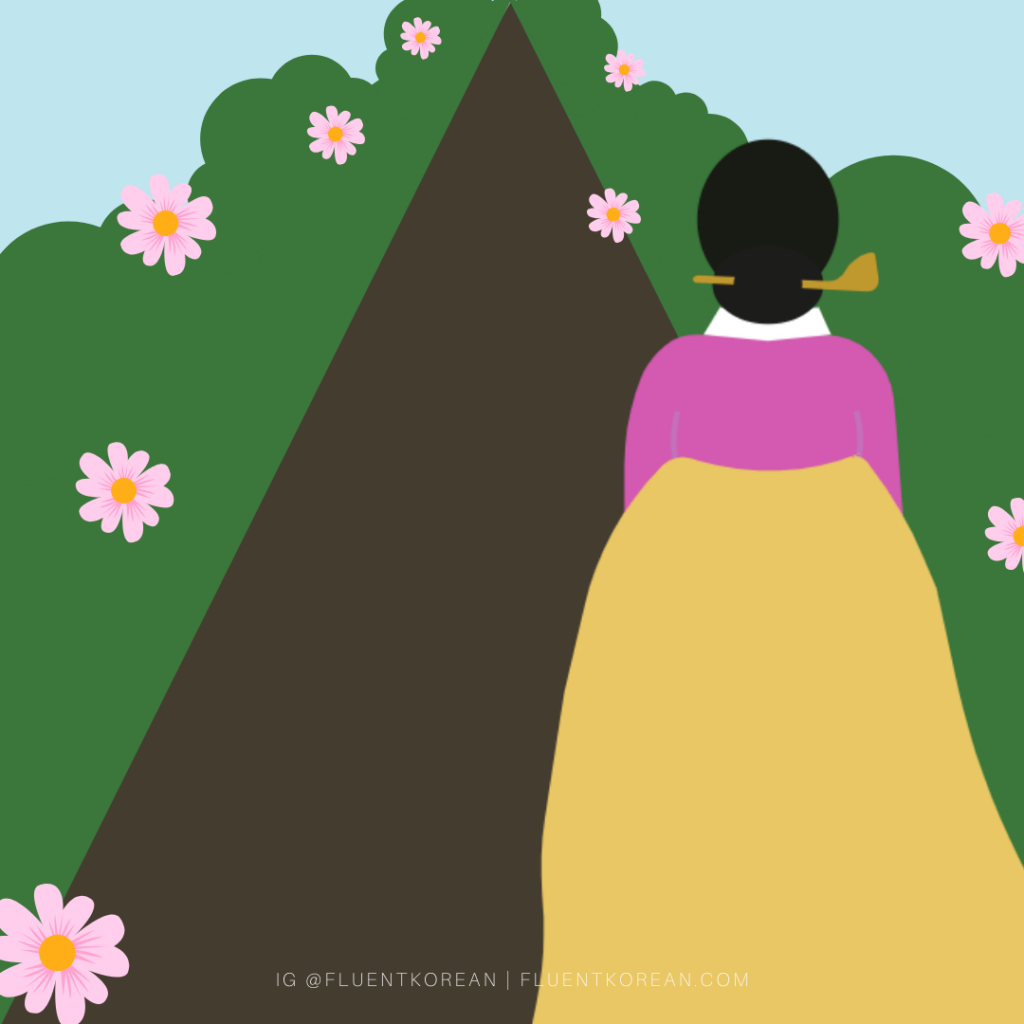
The Paradoxical Existence of Gisaeng in Neo-Confucian Korea
The Gisaeng of Old Korea
Contemporaries denounced them as no’ryu’jang’hwa (노류장화/路柳牆花)1, trees and flowers that grow along the road and on walls that are easily plucked by anyone, i.e., women of easy virtue. In the same breath, they were also praised as hae’eo’hwa (해어화/解語花)2, beautiful flowers that could understand words and speak poetry.3 These flowers illustrate the contradictory nature of the gisaeng (also spelled ‘kisaeng’) of Old Korea.
Some researchers theorize that gisaeng have existed for thousands of years. Indeed, there is evidence found in paintings and written records of female entertainers in Korea as early as the Three Kingdoms Period (57 BC-AD 668).4 “For many centuries, they formed both the most prestigious and most despised social group in Korea,”5 but it was in the strict confines of Joseon society that this dichotomy was most pronounced.
Gisaeng were highly-skilled courtesans. Technically, they were also slaves and sex workers, but even then, a gisaeng was an emancipated woman who was thoroughly educated, multi-talented, and lived with a level of dignity not often bestowed to other women in Joseon society.
Ultimately, the gisaeng tradition ended around the same time the Joseon Dynasty fell, but not before degrading their craft and reducing many gisaeng into mere prostitutes for the pleasure of 20th century Japanese colonizers.5
These days, even though the word is often used erroneously to describe high-end women of the night, gisaeng in the traditional sense no longer exist. However, aside from being “early examples of emancipated females”4 in Korea, gisaeng have left a major mark on national culture. In the latter half of the 20th century, many remaining gisaeng were appointed carriers of Korean Intangible Cultural Property for their development and skills in traditional art, music, and dance providing legitimacy to their work as preservers of Korean culture.6
The Women of Joseon
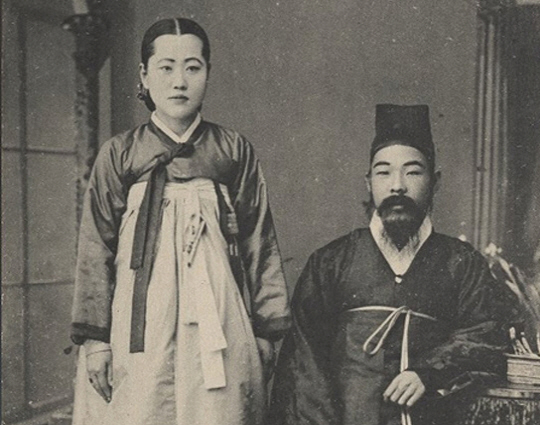
The founders and the ruling class of the Joseon dynasty believed that the demise of Goryeo (the previous kingdom) was, to some extent, caused, by “the breakdown of women’s morals” which brought about social chaos.7 So in their newly formed society, the rulers used a heightened strain of Confucianism philosophy to control women and subjects. Women and men were always to be separated. Women could not get an education save for the skills they needed to successfully run a household in accordance with the rules of Neo-Confucianism.
“It has been very often said that the position of woman is more deplorable in Korea than in any other civilized or semi-civilized country. And I have comparatively little to urge against the statement.”9
– Quaint Korea (1895), a travel memoir by the American-born writer, Louise Jordan Miln
The Gyeongguk Taejon (or the State Code of the Joseon Dynasty), a compilation of all Joseon laws that everyone lived by, had many regulations that physically restricted and repressed women. For instance, women could not ride on horseback or attend outdoor parties. They were rules that if broken, led to severe punishments such as 100 lashes.8 For Joseon women, chastity (which they were to protect at all cost) and loyalty to their men were their most important attributes. In the event of rape, women were encouraged to commit suicide. If they became widows, suicide was also an honorable path because it symbolized complete piety to their husbands.
The only path for a respectable Joseon woman was to marry and produce male heirs. Once married, they lost their identity as an individual and were referred to as “the wife of” or “the mother of”. On top of the physical repression listed in the State Code, women had to refrain from the “Seven Evils” which included “disobedience to parents-in-law, failure to bear a son, adultery, jealousy, hereditary disease, talkativeness, and larceny.”8 Violating any of the “Seven Evils” allowed the husband to divorce his wife without any due process, which often led to destitution or suicide.8
It was said that the husband and wife rarely spoke to each other during the day. Sex was merely an exercise in reproduction and women were advised to make neither sound nor movement during marital intercourse.
A scholar and official named Song Shiyeol wrote a guide for his daughter on the occasion of her wedding.9 It was later circulated within yangban circles as reference material for daughters.
How to Serve Your Husband
A woman’s hundred-year hopes and aspirations rest with her husband. Serving your husband lies in not going against his wishes. Respect and support his wishes completely, not going against even one word or decision except on those occasions when he is about to make a completely unacceptable mistake. Not being jealous is the first thing in serving one’s husband. Even if he acquires a hundred concubines, accept them with equanimity. No matter how much he loves a concubine, do not get angry with him; instead show him more respect. Your husband is a serious scholar and will not indulge in women. Nor are you the type of woman who will be jealous. However, I am still warning you of the danger. Not only should you pay heed but when you have daughters, instruct them also on this matter. Many families have been ruined by women’s jealousy. Jealousy nullifies all other beautiful conduct. Despite intimacy, husband and wife should always be respectful of each other. Speaking of all other matters of daily life, you should not be too loose, and you should treat him as a respected guest. Then your husband will treat you with respect in return. Please pay heed to this.
Excerpt From Instructions To My Daughter By Song Siyŏl
Gisaeng, The Slave
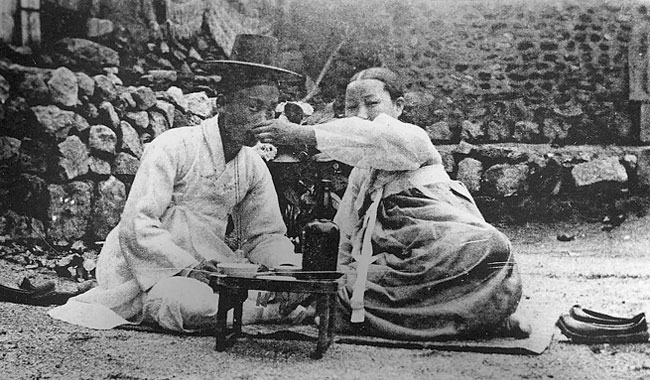
In Goryeo, gisaeng could become royal concubines and gain noble status. During the Joseon Dynasty, however, a gisaeng was in the lowest caste of Korean society and the property of the state.4
They were registered in government offices similar to other members of the slave class, the cheonmin. Because status was hereditary, female children of gisaeng followed their mothers’ profession. Some people became gisaeng due to financial hardship – lowborn families could sell their young daughters to gisaeng schools.6 Gisaeng status was also doled out as a means of punishment. Young female relatives of yangban oraristocratic men who committed crimes such as treason were often condemned to a life of perceived dishonor and servitude.5
Despite their slave classification, the gisaeng were treated differently, more preferentially, than the other professions of their caste. They never wanted for food, shelter, or clothing, and depending on their skills and professional attainment, were allowed to wear colorful fabrics and silver and gold jewelry usually reserved for nobler women. 10 Unlike Western definitions of slavery, Korean slaves were allowed to own property, get married, and be paid for their services. A better way to think about slavery in Korea is more like serfdom.11
Wealthy men could sometimes purchase a gisaeng from the government offices and install them as concubines in their home.
Gisaeng, The Sex Worker

Gisaeng or 기생 is a Sino-Korean word that comes from two Chinese characters 妓生/jìshēng. 妓/ jì means prostitution and 生 sheng in this context is a noun suffix, used in names of occupation or stations of persons such as 學生/ 학생 which means student.
유곽쟁웅 (遊廓爭雄) by Shin Yun-Bok (Photo Credit)
The etymology and meaning of their title, identity, and social group label them as sex workers, but in reality, a gisaeng was more than just a courtesan or prostitute. While sex was often in a gisaeng’s repertoire of services, their main purpose to the men who paid for their time was to entertain and provide companionship.
If anything, what gisaeng sold was a fantasy.
In the later years of the Joseon Dynasty, gisaeng were further divided into three different classes:
The first class were gisaeng who were exceptional in their crafts, highly educated, and seldom sold sex. Second class gisaeng were often older, retired gisaeng who were essentially high-level prostitutes but could still hold their own on matters of poetry and philosophy. The third class which included unskilled and less educated gisaeng who sold sex more often to commoners.
Regardless of their gisaeng rank, there was indeed an expectation of sexual activity and subservience to the men they performed for. Refusal could mean dismissal and disgrace.8 However, even with the lowest class of gisaeng, their services were not affordable to most Korean men and sex was not blatantly transactional.
Courtship and “…an element of decorum and illusion of authentic romance was always maintained…”.5 Even though they were technically slaves and sex workers, the fantasy afforded gisaeng, to a certain extent, some freedom from shame and judgment.
Decorum and dignity were maintained even in the dress and movements of gisaeng. Miln wrote:
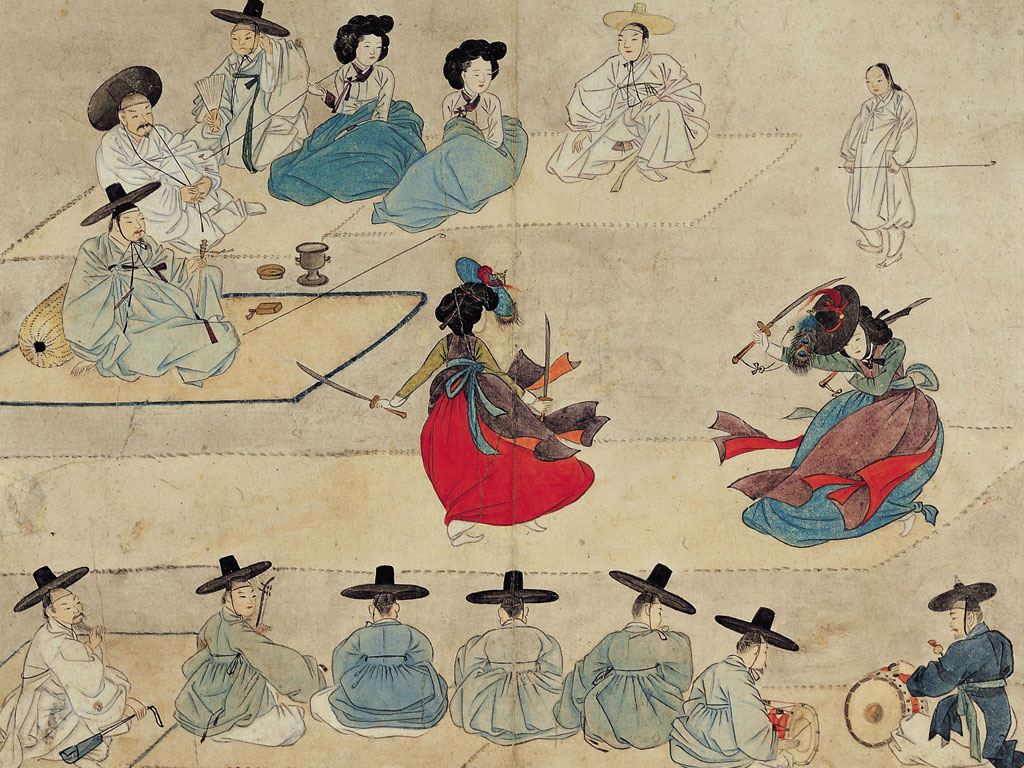
“Most Asiatic dances are slow. Probably the slowest of them all is the dance of the Korean geisha. Like all the dances of the Far East, with which I am at all familiar, it is absolutely free from vulgarity, or from suggested coarseness. The geisha herself is covered and covered from throat to ankle. It would be imprudent to say how many dresses she usually wears at once. She dresses in silk and in glimmering tissues. Before dancing she usually takes off two or three of her gowns, and tucks up the trains of the robes she still wears, but even so she is very much dressed, and a thoroughly well-clad person.“9
– Quaint Korea (1895), a travel memoir by the American-born writer, Louise Jordan Miln
Dancing Together with Two Swords by Shin Yun-Bok (Photo Credit)
The Allure of Gisaeng
Everything that the richest and most powerful men of Joseon admired and loved about gisaeng came from the fact that they were completely different from their women at home. Whereas the Confucian woman was a symbol of chastity, stoicism, reticence, and unyielding loyalty, gisaeng, on the other hand, were promiscuous, expressive, witty, intelligent, and vibrant women who lived outside of the female code. They weren’t physically confined to the hearth or piously devoted to one man. They could speak their mind, travel locally, go to social gatherings, and intermingle with men.8 They offered “a unique type of company that neither filial wives nor common prostitutes could provide.”8
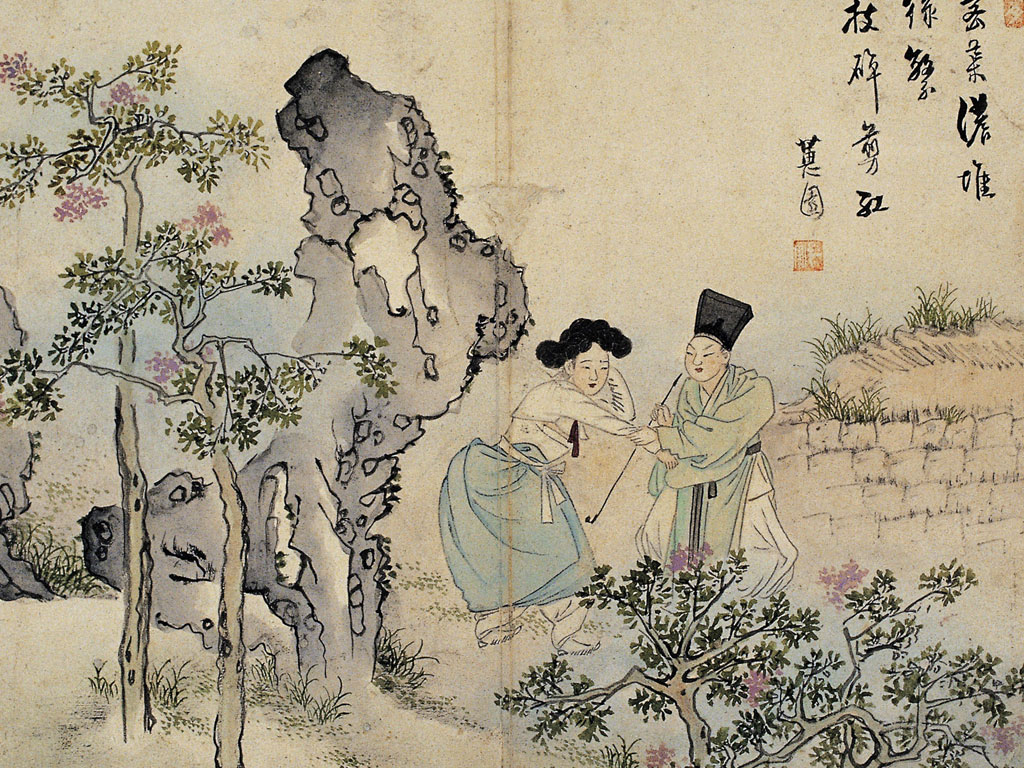
“They not only provided physical beauty, but their vast educations enabled them to offer intellectually stimulating company, thereby intriguing and alluring men.”8 Whereas one of the seven evils in the code for wives was being too talkative, the gisaeng “offered romance and flirtation, which men could not have with their restrained, Confucian wives.”8
When the yangban gentry craved the attention of a learned female companion he would seek out a gisaeng for her Scheherazade-like mastery of the art of conversation and storytelling.
“Companionship is the first and the chief thing required by an Oriental man from the women he pays to share some of the hours that he spends away from home. If the Hindoo, or Chinaman, or the Japanese, or the Korean man be poor, he has no leisure hours, and certainly cannot afford the illicit companionship which comes dear, and becomes dearer in the long run, all the world over. If he be well-to-do, the chances are that he has a bungalow or yamun running over with wives. Therefore, it is not for a common bestial satisfaction, but altogether for natural human companionship, that the men of the Far East so largely employ and so generously pay those Eastern women who have broken through the closed curtains and out of the sure safety of Oriental home-life, into the turmoil and the promiscuousness of society.”
– Quaint Korea (1895), a travel memoir by the American-born writer, Louise Jordan Miln
The Most Educated Women of Joseon
“The geisha girl is, as a rule, rather better educated than the concubine, better educated, quite possibly, than the wife; for the geisha must make her way, and hold any position she gains, solely by personal talent, personal attractiveness, and personal attainments.”12
– Quaint Korea (1895), a travel memoir by the American-born writer, Louise Jordan Miln

When education was thought to be beneath a woman of the upper crust, limited in their role as the keepers of the hearth, and unattainable for men and women of lower castes, the gisaeng class traversed these gender boundaries even within strict Confucian lines. Unlike Joseon women, gisaeng received an education that mirrored that of the yangban gentry which started between the ages of six and ten.8
A gisaeng girl in 1910 (Photo Credit)
Gisaeng had the body of a slave and a mind of an aristocrat. They spent years honing and perfecting their craft. Gisaeng had diverse talents. They could dance, sing, and play multiple instruments. They studied etiquette, medicine, and textile arts.6 They could read and write in Classical Chinese and in Korean script (after its promulgation in the 15th century), wrote poetry, and were well-versed in the arts, politics, philosophy, and history. They were trained in conversation, seduction, and the “maximum utilization of female sexuality.”8,13
Some regarded gisaeng as the “female ‘elite’ of the Joseon Dynasty” for their ability to converse on an intellectual level with the noblemen who sought their company.3
The Voice and Image of Women in Joseon
There are two main reasons that gisaeng were the voice and image of women during the Joseon Dynasty.
Firstly, because gisaeng were literate, intelligent women, they wrote prolifically. In fact, there is a whole genre of improvisational poetry called sijo that was mostly written by gisaeng. Their work offered a stark contrast to the stoic and idealistic writing left by the Neo-Confucian scholars of their time. Yangban men wrote about morality and their observances of nature.10 Gisaeng women writing outside of the sphere of Confucianism, however, had more freedom of expression. They wrote expressive letters and poetry about love, longing, and melancholy.6
Secondly, gisaeng were usually the only women that men saw on a regular basis. Therefore, whether authors depicted them as witty heroines (e.g., Hwang Jin-Yi) or as jealous concubines (e.g., The Story of Hong Gil-Dong), they became characters in many works of literature, documented in novels, paintings, folk tales, and poetry.
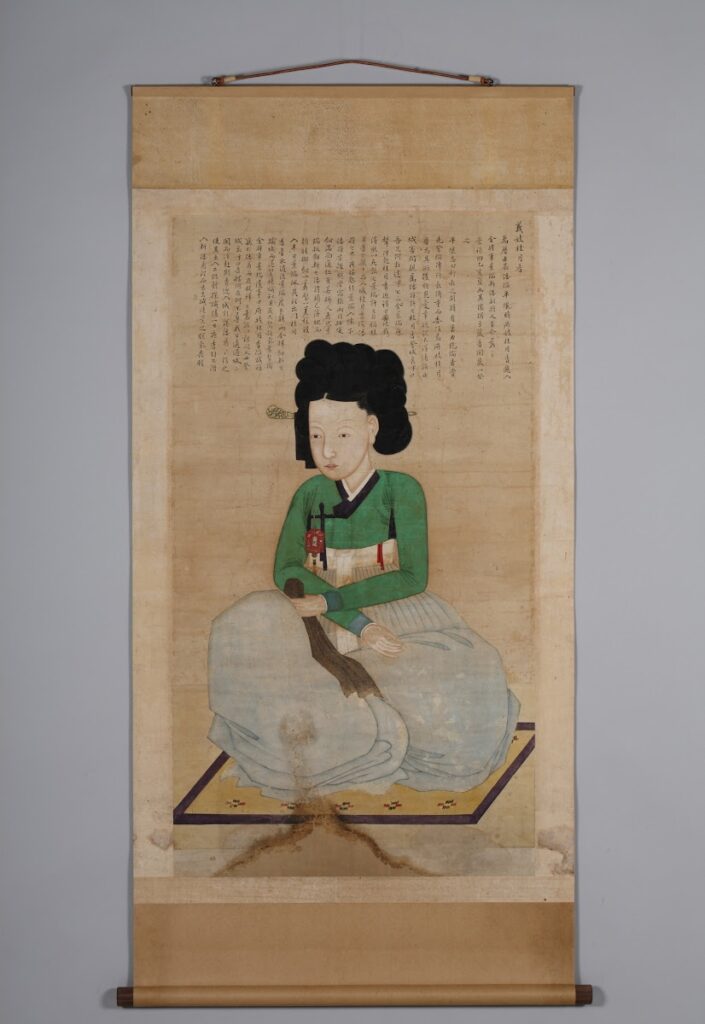
The Demise of the Gisaeng Tradition
During the Joseon Dynasty, there were several attempts to abolish the gisaeng tradition because it did not fit in with Confucian teachings. Yet, many Joseon kings ultimately decided to keep gisaeng because they were afraid that without this outlet, there would be chaos in the social order. They were also afraid that men would do more immoral acts like try to steal wives. Further, gisaeng through their relationships with important and powerful men had some soft power over decisions made.
With the signing of the Japan-Korea Treaty of 1876, Joseon Korea came under the sphere of influence of Japan which started a plethora of changes in government, military, business processes which moved towards integrating the two countries. In 1895, the Gabo Reform abolished all slavery and hierarchy in society. The Gabo Reform was heavily influenced by the Meiji Restoration. In 1896, Joseon became the Korean Empire. Upon signing of the Japan-Korea Treaty of 1905, Korea became a protectorate of Japan, indirectly ruled by the Japanese Resident-General of Korea. And in 1910, Japan formally annexed the Korean empire through another Japan-Korea Treaty.

Many young Joseon women met an even worse fate under the Japanese Colonial Era in the 20th century. The virginity that made them honorable women to their future husbands also made them attractive to the Japanese Imperial soldiers because their abstinence meant they didn’t have sexually transmitted diseases. One out of five Imperial Japanese soldiers had some type of venereal disease that they contracted from “mass rapes in the Russo-Japanese war.”8 Colonial soldiers fraudulently lured or recruited unmarried women at gunpoint to join the “Women’s Volunteer Corps”, a euphemism for comfort women that sexually serviced Japanese troops against their will.8
The Japanese sifted out many of the artist and entertainment roles of the profession, reducing the whole group to prostitutes for the pleasure of the Japanese.6 The Japanese wanted to wipe out Korean culture by restricting the use of the Korean language and changing Korean names. They didn’t see gisaeng as beautiful, talented, and educated women and they didn’t see Korean dance and music as worthy forms of art. All they saw were dirty prostitutes and demanded frequent mandatory health checks for STDs.6,8
The Importance of Gisaeng in Preserving Traditional Korean Arts
During the colonial era, many Korean arts were forgotten by a whole generation of Koreans simply because they were not exposed to it. The Korean War also left people so destitute that people were more concerned with making a living than appreciating traditional song and dance.
In the latter half of the 20th century, Korea started concerted efforts to prevent the extinction of traditional arts that were suppressed during the Japanese Colonial Period. In 1962, the government enacted the Korean Cultural Preservation Law to promote and preserve Korean culture and ethnicity. The law aimed to make cultural arts especially performance arts more accessible to the public and document these arts for future generations.
The law created a system to document and identify existing traditional music and dances called the Intangible Cultural Properties and those who performed them were called the holders of the properties. Those designated as holders of intangible properties were seen as the top experts in that specific art form and received government support and exposure to keep the tradition alive.
“The gisaeng played a prominent role in the institutionalization of Korean traditional art forms in South Korea. Many of the women who had gained status as Human Cultural Assets were former gisaeng or had been trained in colonial-era gisaeng schools, but they were given the title of “researcher” or “performer”……These women carried colonial gisaeng lineages back into national institutions again, and, freed from the economic pressures of the threat of sexual labor, the women were now subjected to the new pressures of national culturalism. For one, this meant the unspoken injunctions to be discreet about the gisaeng and the colonial past, the sexual frankness of folk music, and so on. But also, a performer had to struggle to prove the value of her art form and her virtuosity as an artist; in folk and middle-class music genres, performers added complex ornamentation to their songs or instrumental music and borrowed aristocratic musical elements (for example, tempo and ornamentation) to increase the prestige of their musical forms.”
– Pilzer JD. The Twentieth-Century “Disappearance” of the Gisaeng during the Rise of Korea’s Modern Sex-and-Entertainment Industry. In: Feldman M, Gordon B, eds. The Courtesan’s Arts: Cross-Cultural Perspectives.
For decades, many gisaeng hid their identity and worked “regular” jobs to earn money. However, with renewed interest and government support for preserving Korean arts, the former gisaeng, who were then elderly, came out into the public sphere and joined efforts to ensure the longevity of traditional Korean arts.
The Legacy of Patriarchy
The end of the Joseon Dynasty feels like such a long time ago – partly because of the more vivid memories of war and South Korea’s rapid modernization. However, the cultural inheritance of the Joseon Dynasty, especially when it comes to women, is clearly evident.
It’s ironic that while Korea used to be a sex tourism destination for the Japanese, Korean men make up one of the largest groups that come to the Philippines as sex tourists. There’s even a term for the offspring of Korean men and Filipino women – Kopinos. They’re often abandoned by their Korean fathers who return to Korea to live their “upstanding” lives. The same way Joseon yangban men turned to gisaeng for flirtation and sexual comfort and then seamlessly went back to their “moral” Confucian ideals. There are even reports of how half of all Korean men have paid for sex.
It’s seen in the gender inequality data in South Korea, which is consistently one of the highest in the world. In 2018, the gender pay gap was around 34.1% (OECD average 13.1%).14 OECD data showed that the female employment rate was 56.1% (OECD average is 59.3%).
Suffrage and the right to hold political office was granted in 1948, but women are still underrepresented in politics. In 2012, Park Geun-hye, the daughter of former dictator Park Chung-hee, was elected president. Even though she never championed women’s rights as a politician, many were hopeful for change and saw this as a victory for gender equality. However, according to the Korean Women’s Associations United, sex crimes and the gender wealth gap became worse under Park.15 By 2016, her scandals and impeachment ended her presidency. Despite the existence of many problematic male politicians in Korean history, many blamed her failings on the fact that she was a woman.
It’s seen in how even if both husband and wife work full-time jobs, women are still responsible for doing the cooking, the cleaning, and other domestic chores.
It’s seen in the way my parents half-jokingly tsk-tsk-tsk me at the dinner table for claiming my bowl of noodles first instead of serving my partner before me even though he insists on “ladies first”.
The first model Koreans had of an emancipated woman was a gisaeng. She was a sex worker, a slave, and she lived outside of polite society. And because she lived outside of the status quo, she was allowed to pursue a high level of education and arts. We need to be cognizant of the deep-rooted patriarchal belief systems that have trickled down to our modern society to understand why things are the way they are and how we can move forward. Since Joseon, feminist movements and legislation have made some improvements, but we need to do more. And in South Korea, many women are voting with their feet.
References
- 1.노류장화 路柳牆花. Naver Korean Dictionary. https://ko.dict.naver.com/#/entry/koko/38ba5fedc0c94cb8906ab7f5263f78d5.
- 2.해어화 解語花. Naver Korean Dictionary. https://ko.dict.naver.com/#/entry/koko/1403d48a64784f5c98d7f4157d09b870.
- 3.Han H-S. Women’s Life during the Chosŏn Dynasty. International Journal of Korean History. 2004;6:113-162. https://ijkh.khistory.org/upload/pdf/6_05.pdf.
- 4.Pilzer JD. The Twentieth-Century “Disappearance” of the Gisaeng during the Rise of Korea’s Modern Sex-and-Entertainment Industry. In: Feldman M, Gordon B, eds. The Courtesan’s Arts: Cross-Cultural Perspectives. Oxford University Press; 2006:295-311.
- 5.Lankov A. The Dawn of Modern Korea: The Transformation in Life and Cityscape. Seoul: EunHaeng NaMu; 2007.
- 6.Mueller RH. Female Participation in South Korean Traditional Music: Late Chosŏn to the Present Day. 2013.
- 7.Lee PH, de Bary WmT, eds. Sources of Korean Tradition – Volume One: From Early Times Through the Sixteenth Century. New York: Columbia University Press; 1997.
- 8.Maynes K. Korean Perceptions of Chastity, Gender Roles, and Libido; From Kisaengs to the Twenty First Century. Grand Valley Journal of History. 2012;1(1):1-19.
- 9.Excerpt from Instructions to My Daughter by Song Siyŏl. Primary Source Document. http://afe.easia.columbia.edu/ps/korea/song_siyol_daughter.pdf.
- 10.Kim Y-C. Women of Korea: A History from Ancient Times to 1945. Seoul: Ewha Womans University Press; 1976.
- 11.Campbell G. Structure of Slavery in Indian Ocean Africa and Asia. Routledge; 2004. doi:10.4324/9780203011256
- 12.Miln LJ. Quaint Korea. London: Osgood, McIlvaine & Co. ; 1895.
- 13.Cho S-W. Renaissance Nun Vs. Korean Gisaeng: Chastity and Female Celibacy in “Measure for Measure” and “Chun-hyang Jeon.” Comparative Literature Studies (East-West Issue). 2004;41(4):565-583. https://www.jstor.org/stable/40247450.
- 14.Gender Wage Gap. OECD Data. https://data.oecd.org/earnwage/gender-wage-gap.htm. Published 2018.
- 15.Choe S-H. Gender Colors Outrage Over Scandal Involving South Korea’s President. The New York Times.
Pin this story on Pinterest:


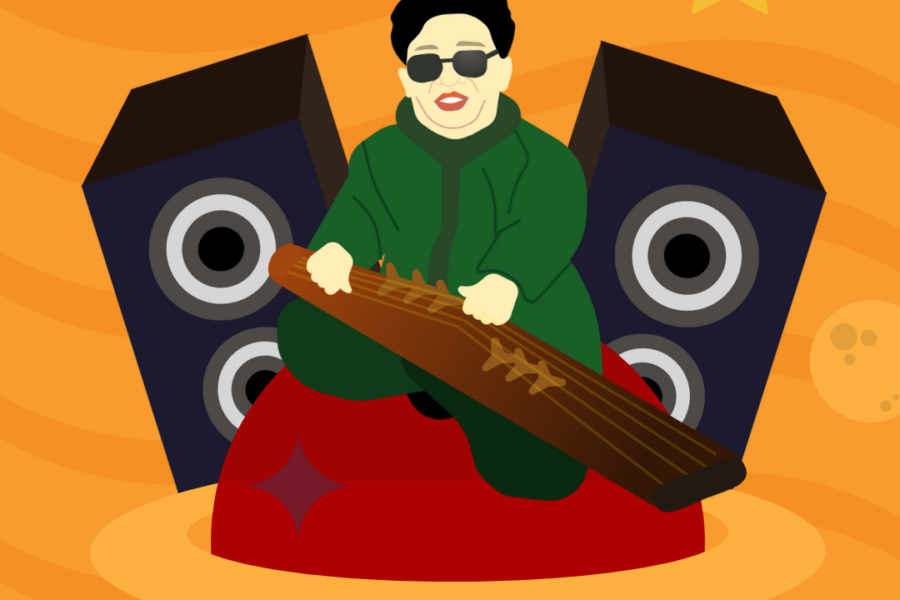

thank you for this! its so hard to find information on gisaengs online